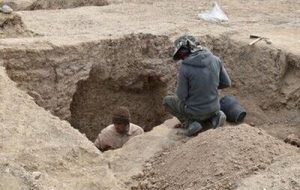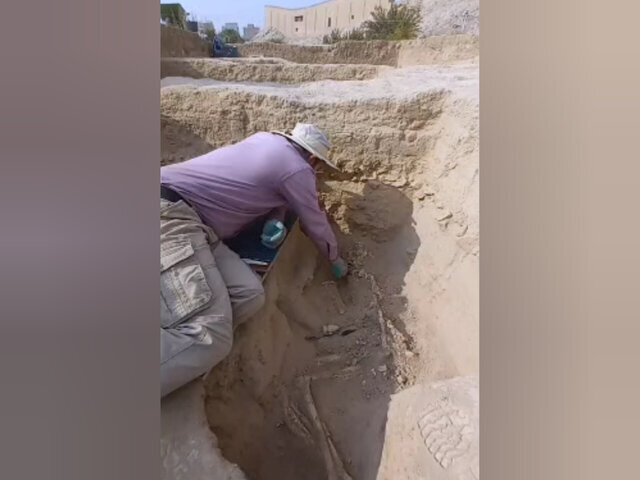Archaeologists unearth ancient skeleton at Cheshmeh-Ali mound in southern Tehran
TEHRAN – Archaeologists have discovered an ancient burial containing a skeleton during excavations at the 7,000-year-old Cheshmeh-Ali mound in Rey, southern Tehran. Preliminary evidence suggests that the skeleton may date back to the Sialk III period, around 4300 BC, marking it as a significant prehistoric find in the region. According to Hamidreza Valipour, head of

TEHRAN – Archaeologists have discovered an ancient burial containing a skeleton during excavations at the 7,000-year-old Cheshmeh-Ali mound in Rey, southern Tehran.
Preliminary evidence suggests that the skeleton may date back to the Sialk III period, around 4300 BC, marking it as a significant prehistoric find in the region.
According to Hamidreza Valipour, head of the Cheshmeh-Ali excavation team, the burial site and skeletal remains were uncovered within architectural layers attributed to the Sialk III era.
Pottery and architectural features from this period support the preliminary dating, aligning with artifacts previously identified from the early settlement phases of this region.
“The continuation of excavations in future seasons may enhance our understanding of the architectural layout and daily life within this ancient settlement,” ISNA quoted Valipour as saying on Monday.
The team hopes the Research Institute of Cultural Heritage will authorize sampling of the skeleton for further dating analysis to accurately establish the burial period.

This excavation at Cheshmeh-Ali marks the first archaeological investigation at the site in nearly three decades. The project, which began following the opening of Shahid Beheshti University’s Archaeological Field Research Center, is led by Valipour and his deputy, Iman Mostafapour, and includes professors and students from the university’s archaeology department.
Located near an ancient spring, Cheshmeh-Ali lies in the historical city of Rey. The mound, approximately seven meters high, is situated next to remnants of the Islamic city walls of Rey, which reach 15 meters in height.
Cheshmeh-Ali is a historical and recreational spot located in the south of Tehran and north of Rey as the history of settlement in the latter goes down to the 3rd millennium BC.
Rey is one of the oldest cities in the central Iranian plateau with a history of human settlement that stretches over 8,000 years, according to Qadir Afrovand, the director of Rey National Heritage Base.
The history of Rey, according to the Encyclopedia Britannica is featured in the Avesta (the original document of Zoroastrianism, an Iranian religion) as a sacred place, and it is also mentioned in the book of Tobit, of the biblical Apocrypha, and by classical authors.
AM
